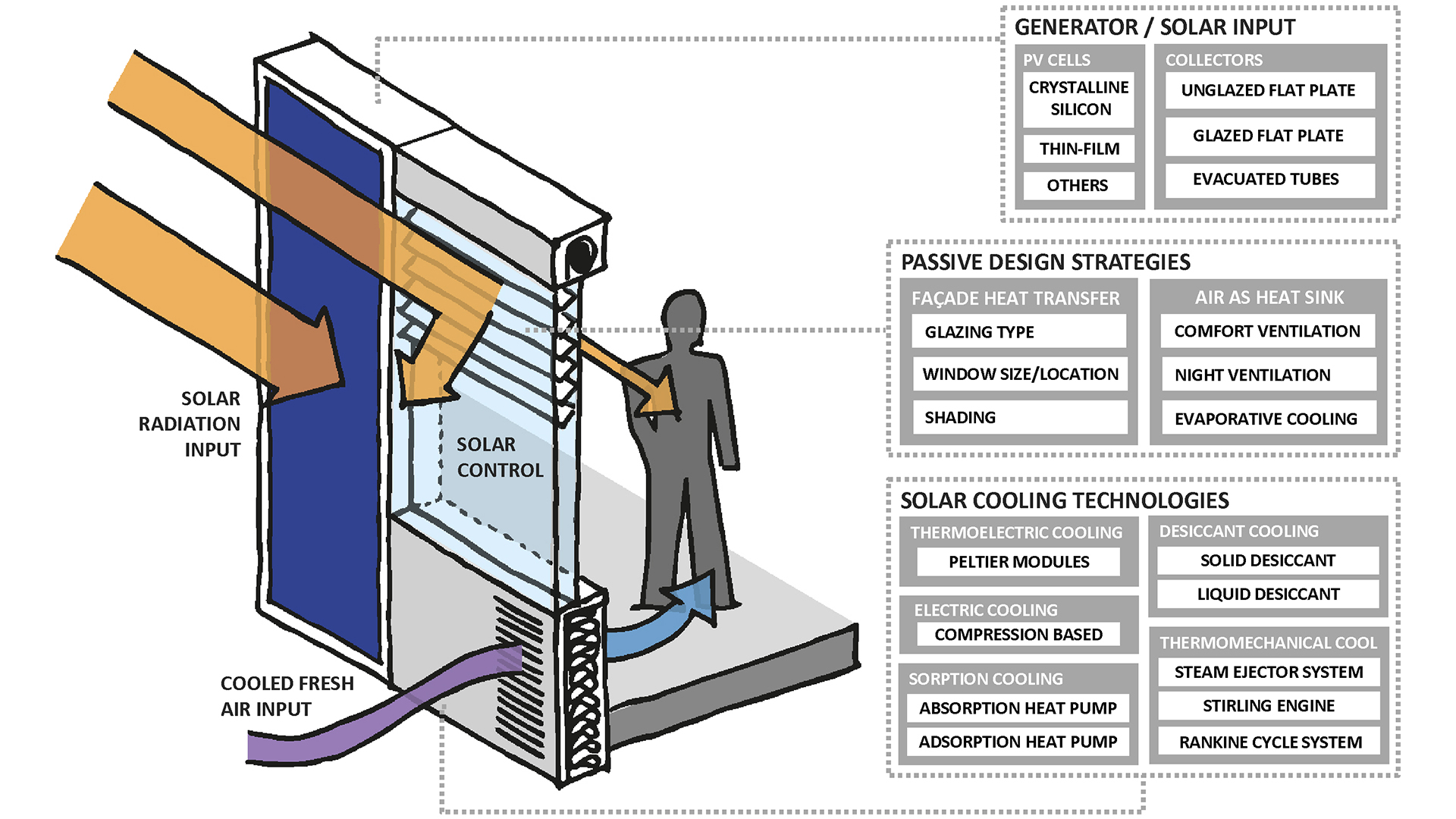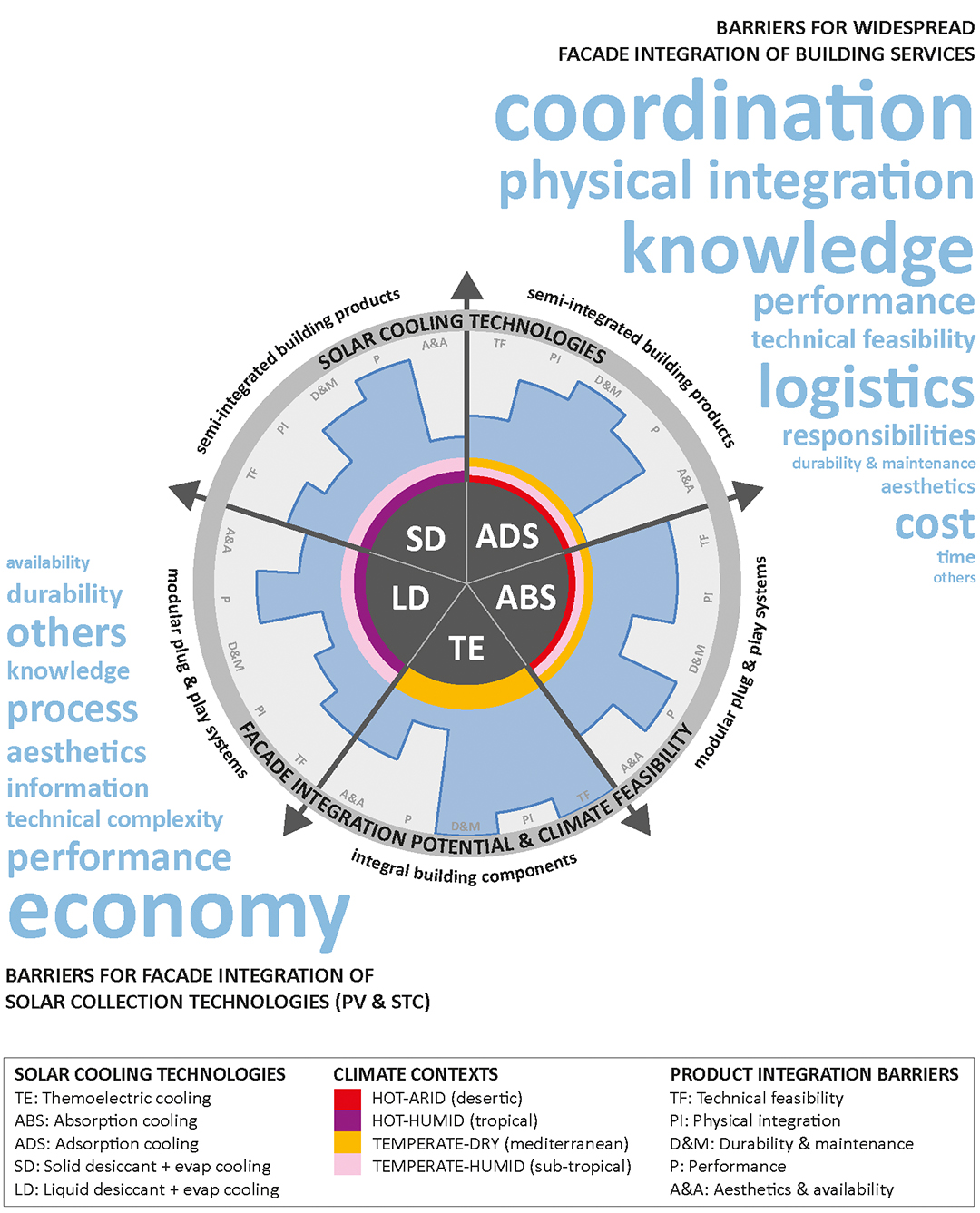Every climate requires its own solar cooling
The cooling of buildings slurps energy and is primarily aimed at combating the effects of the sun. Can solar energy and heat not be used for cooling? PhD candidate Alejandro Prieto Hoces discovered that solar cooling offers opportunities, but it rarely is a final solution. Just start with good sunscreens.
No less than 15 percent of the total worldwide energy consumption is spent on the cooling of buildings. This is usually done through AC-systems, but the compressors in these systems use a lot of energy. The use of solar power would be the perfect alternative for this unsustainable method. “At least, if it is meaningful and affordable. Because otherwise it is better to just put down the sunscreens,” says Prieto Hoces. The PhD candidate compared various alternative techniques for façade integrated self-sufficient building cooling. Key questions: are they practically applicable and are they really more sustainable?
Heat pumps seem to be an obvious solution. They can easily use solar energy and solar heat. The disadvantage is that heat pumps require a hydraulic system, in which liquids are pumped around.
The same applies to absorption cooling. This technique, which we know from refrigerators, uses heat to evaporate an absorption liquid - often ammonia. The phase change causes the temperature to drop. It is effective, but there is also a lot of energy loss by circulating liquids.
That problem does not apply to adsorption techniques. Here, the refrigerant is not absorbed through a liquid, but through a solid. It is more difficult to achieve a continuous process, but the advantage is that adsorption cooling machines can work well with low temperature heat and low voltages. Ideal for coupling to solar collectors. A disadvantage is the high cost.
Adsorption cooling has one disadvantage in common with absorption cooling: the performance is low compared to commonly used AC units. In that respect, there is an interesting alternative: cooling by means of drying agents. This 'desiccant cooling' uses materials such as silica - known from the small bags in the packaging of new electronics. Due to the absorption of moisture from the air, the temperature also decreases. The temperature could be further lowered by coupling an evaporative cooling unit. Solar energy is used here for regeneration of the desiccants.
But just as any technique has its limitations, this also applies to desiccant cooling. The fact that moisture is extracted from the air limits the applicability to humid, tropical regions. In the desert of Saudi Arabia, one can better use absorption cooling, or evaporative cooling units, Prieto Hoces observes. And in southern Europe, he sees thermoelectric cooling as the ideal candidate. This virtually maintenance-free technique is suitable for small temperature differences, such as in Mediterranean regions, and can also provide heating.
In short, every circumstance requires a customised cooling technique. And each climate also requires a customised building design, says Prieto Hoces. Too easily we ignore the enormous energy gain that can be created by adjusting windows, sun blinds, vegetation, and orientation to the sun. Prieto Hoces: “Reducing energy consumption is not only a matter of technology, but also of culture. Offices with glass façades, which we like in Western Europe, are not suitable for a desert or tropical climate. Regulation and education are equally important, otherwise you will never get a good design."


